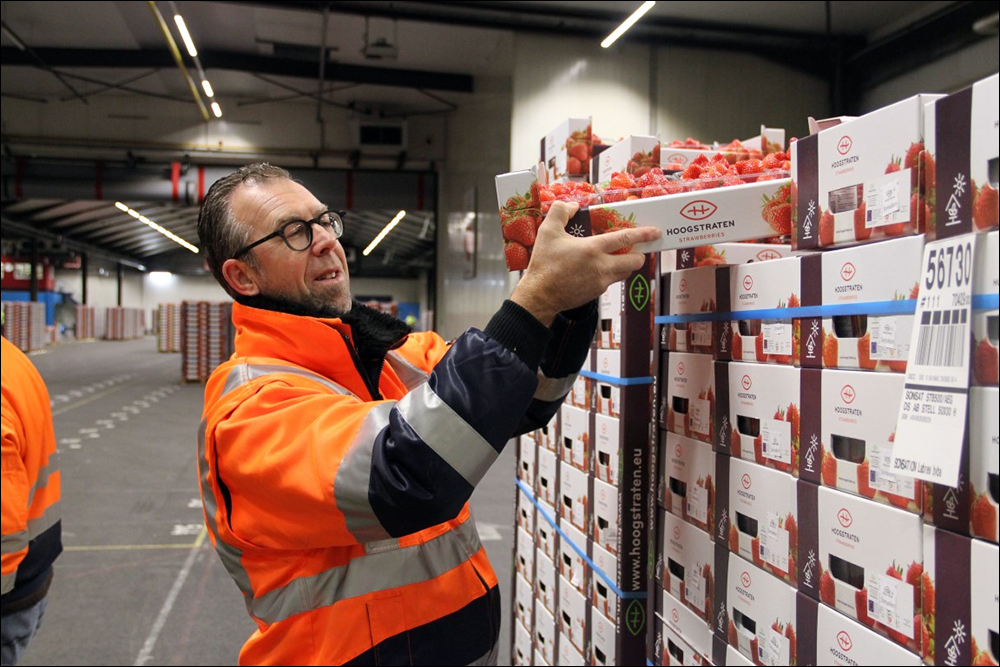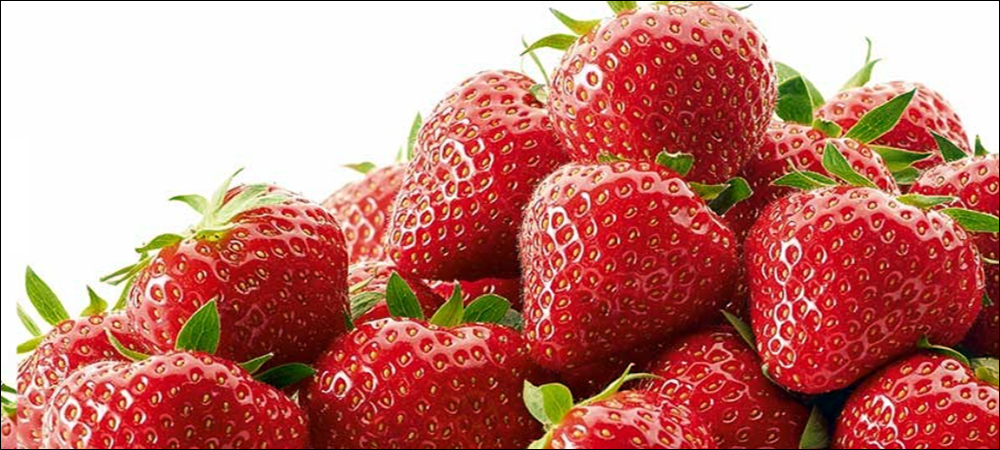Belgian fresh fruit and vegetable brand Coöperatie Hoogstraten has gained visibility into the movements of its strawberries throughout the supply chain, enabling it to ensure fast, efficient delivery of its empty cardboard baskets and punnets to growers for the containerization of strawberries. The berries are then tracked through the delivery of product to auction sites, stores and consumers.
The solution uses QR codes to track each cardboard carton of fruit, linked to passive UHF RFID-tagged pallets for automated data capture about the product as it travels to stores. The solution, taken live last summer, was launched in conjunction with the company’s transition from plastic to sustainable cardboard baskets, or punnets, in which the fruit is transported and sold to consumers.

Coöperatie Hoogstraten dates back to 1933. Located in the northern section of Belgium, in Flanders’ Hoogstraten area, the fresh produce wholesaler sells a variety of products from hundreds of growers to retailers across Europe via auction. The strawberries it sells originate from 223 growers in Hoogstraten and other parts of Flanders. The products are provided to consumers in Belgium and the Netherlands, as well as other countries in Europe and the United Kingdom.
Traditionally, strawberries were tracked with a color code printed on the side of plastic punnets, according to Jeroen Swolfs, Coöperatie Hoogstraten’s junior operations manager. To deliver fresh product to stores on time, the company prepares a pallet-load of empty punnets for growers as strawberries are needed, and the growers harvest the berries in their greenhouses. They receive the punnets from Coöperatie Hoogstraten, then fill them with freshly picked berries and return them to the wholesaler’s site, after which they are taken to an auction site and are then sent to stores for sale to consumers.
Each pallet contains 1,200 trays of berries, with 30,000 punnets on each pallet. Prior to the RFID and QR code system’s deployment, trays containing strawberries of the same quality (such as the same size and variety) from different growers were placed on pallets until they were full and could be identified by their color code. However, some customers did not want a full pallet, which meant a pallet had to be split, making the supply chain more complex.
“You can never tell exactly how many trays from which grower went to which customer,” Swolfs says. “This is a nightmare for accurate traceability.” In the event of a recall, he adds, “There’s a lot of unnecessary product that has to be taken out of the market,” simply because specific information about each punnet is unavailable. Therefore, when the company shifted from plastic to cardboard punnets, it saw an opportunity to better track the identity of each small container.
The company chose a hybrid system leveraging QR codes to identify every punnet, as well as RFID tags to monitor the pallet on which each cardboard box is stacked and transported. “Then the questions became how to deal with the traceability,” Swolfs states, “and how to make a step toward more accurate traceability.” To that end, Coöperatie Hoogstraten collaborated with its solid cardboard and machine supplier, Smurfit Kappa, which provides the cardboard and shaping equipment for building the punnets and trays. It constructed the system to enable automated printing of QR code data on each punnet.
The next step was to implement a scanning solution to determine which trays full of punnets are on each pallet. There were two options to identify the pallets, Swolfs says: a simple printed visual pallet label or an RFID label. “Since, in our packaging warehouse, the forklifts take four pallets in one time,” he explains, “we decided to go for the RFID label.” In that way, the pallets could be identified without requiring that the forklift driver exit the vehicle to record which pallets were being picked up. All four tags on the four pallets could be automatically captured by a forklift reader.
Before punnets are sent to a grower for filling, Coöperatie Hoogstraten uses its Smurfit Kappa equipment to shape the punnets while printing a unique QR code that links to the specific grower. Those punnets are then placed in trays, and the pallet is transported over a roller conveyor to a label machine. At this location, the UHF RFID label, containing its own unique ID number, is applied to the pallet. The pallet tag is read by Impinj readers mounted on forklifts, while the QR codes are scanned using cameras in what are known as “vision tunnels,” provided by VistaLink, according to Lauran D’hanis, Aucxis‘s account manager and business consultant.
Aucxis’s Hertz middleware captures all data from the vision tunnels, D’hanis says, along with each RFID tag’s ID number. Next, the middleware manages the data, linking the pallet’s unique ID with the punnet ID. Finally, all information is forwarded to Coöperatie Hoogstraten’s enterprise resource planning software. When pallets loaded with punnets are prepared for shipment to a grower, a forklift with an onboard Impinj Speedway Revolution reader picks up those pallets. As the vehicle transports them to the dock doors and onto a truck, each tag ID is interrogated, thereby updating the pallets’ and punnets’ status as having been shipped to the grower.
Growers fill the containers with strawberries and return them to Coöperatie Hoogstraten. The forklift reader again captures the tag IDs and updates the pallets’ and punnets’ status as filled. When they, in turn, are shipped to the auction site and then to stores, the QR codes on each punnet can be read. They can then be again scanned at the end of the supply chain by the consumers who have purchased the berries. The RFID and QR code project was launched at the end of 2019, and the equipment was installed last year in the midst of the COVID-19 pandemic, which proved disruptive.
“It was hard to start everything up,” Swolfs says, “but in the end, the results were very satisfying.” During the coming months, he adds, a system of tracking the trays in which punnets are placed will commence. “We are already starting to think how we can implement RFID technology in our other logistics processes.” For long-term sustainability, Swolfs states, “We want to reduce the plastic waste by replacing the plastic with cardboard punnets.” Down the line, the company hopes to gain further insight into its entire strawberry logistics process, from harvest to consumer consumption.
“If there is one thing we learned from the coronavirus crisis,” Swolfs states, “it’s the growing interest of the consumer in short-chain fresh produce.” That means getting product into the hands of consumers faster, he says, and in a simpler manner than was possible with traditional supply chains. Consumers, for instance, could scan the QR codes using their smartphones, enabling them to access data regarding products and the growers that provided them. “By linking the consumer directly to the grower profile, we try to fulfill the need of the consumers.”


